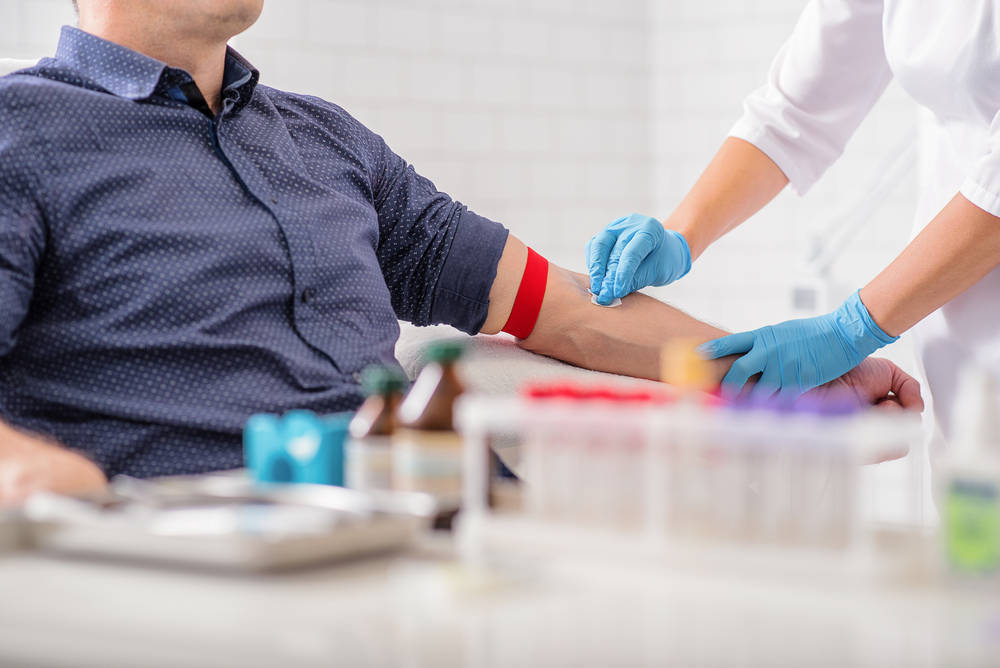Testosterone Blood Test: If you are wondering how is testosterone measured in a blood test, keep reading! You’ll learn how the doctor takes a sample of blood from a vein and analyzes the results to determine testosterone levels. In addition to Total testosterone, this blood test can also determine Bio-available and Free testosterone. You can read more about each type below. In addition to Total testosterone, bio-available and free testosterone levels are also commonly used to determine the levels of other hormones in the body.
Testosterone levels are measured by drawing a sample of blood from a vein
Your doctor can test your testosterone levels by drawing a blood sample from a vein in your arm. Testosterone is a male hormone that is vital to the development of male sexual characteristics. In males, it helps control muscle development, voice deepening, and sperm production. In women, testosterone controls certain bodily functions and contributes to libido. Testosterone is made by the testicles, while the ovaries and adrenal glands produce testosterone in small amounts. The pituitary gland controls the testosterone level in the blood by secreting a luteinizing hormone, which tells the testicles to make more testosterone.
The time of day the blood is drawn can affect the results of testosterone tests. Early morning blood draws are the most accurate. Some labs may use different methods to measure the hormone, including the timing of the test. A morning blood draw is recommended, as testosterone levels are higher in the morning. A doctor can help clarify the accuracy of the results by providing you with information about the lab that conducted the test, its reference range, and the reliability of the results.
Total testosterone
There are two types of testosterone blood tests: serum and bioavailable. The former is considered the gold standard of testosterone testing and is recommended by the CDC. Both test types have different ranges of acceptable results. A total testosterone test is usually reported in nanograms per deciliter of blood. Bioavailable testosterone, which includes free and albumin-bound forms of testosterone, is less commonly measured. The results of a bioavailable testosterone blood test are reported in nanograms per deciliter.
A free testosterone blood test measures the amount of testosterone that is available for use in the body. Although free testosterone tests are often interpreted in conjunction with total testosterone tests, they may be more useful for those with specific health conditions or those on certain medications. Total testosterone blood tests are relatively routine and accurate, especially when performed in an accredited laboratory using established testing methods. In addition, health insurance policies usually cover these tests. As long as you have a current health insurance plan, a blood test of total testosterone will be affordable and reliable.
Bio-available testosterone
Bio-available testosterone is the amount of free and weakly bound testosterone in your blood. This is the biologically active form of testosterone. Testosterone is measured in two forms in the bloodstream: bound to albumin (which is weakly bioactive) and free. Both of these forms are equally active. The amount of free testosterone in your blood is higher than that of bound testosterone. During a blood test, doctors will determine which form of testosterone is present.
The total testosterone measurement is usually adequate for diagnosis. It can also be used in combination with the measurement of follicle-stimulating hormone (LH) to determine whether your testosterone levels are normal. The other type of test measures bio-available testosterone and may be superior to the free version in some situations. However, both methods are useful for determining the amount of hormone in your blood. A blood test is easy to conduct.
Free testosterone blood test
A blood test that measures the amount of free testosterone in your blood is not the same thing as a total testosterone test. Both tests measure the amount of testosterone in your blood, and the test results are available in 4-6 days. However, if the lab experiences an unusual amount of weather or a significant time delay, you may need to wait a little longer. The free testosterone test is particularly useful in diagnosing male sexual dysfunction, erectile dysfunction, and male partner infertility. Low levels of free testosterone can also be a sign of a hormonal problem affecting the hypothalamus and pituitary gland, which regulate the level of testosterone in your body.
If the free testosterone level is below 50 ng/dL, it is often regarded as low. However, it is more sensitive to diagnose hypogonadism when the level is at least 400 ng/mL. Hence, tests for free testosterone that are below 150 ng/dL do not show a reliable prediction of a condition such as hypogonadism. Some tests may be ordered in such cases.
Read More: HOW TO STAY SAFE WHEN DRIVING DURING BAD WEATHER?
